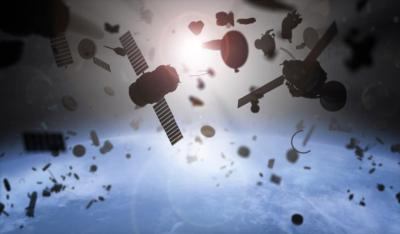Endowments to Hasten Maturation of Orbital Capabilities
TransAstra is a Los Angeles-based orbital logistics and space mining concern about the ambitious business of “advancing the industrialization and settlement of space through the sustainable and ethical development of critical, dual-use space infrastructure technologies powered by the resources of space and the energy of the sun.”

The company has been provided funding through two federal Small Business Innovation Research/Small Business Technology Transfer (SBIR/STTR) programs implemented to hasten the development of technology beneficial to the commercial aerospace market and supportive of undisclosed governmental missions.
The first funding package, awarded by NASA, is applicable to the development of TransAstra’s Mini Bee Capture Bag (MBCB), a space debris removal contraption.
The subsequent funding package was awarded by the Department of Defense for purpose of maturing TransAstra’s Sutter technology, which boasts the abstruse distinction of having the “potential to revolutionize space domain awareness for the U.S. Space Force and commercial space enterprise.”
In Phase-1 of NASA’s SBIR Ignite program, TransAstra will perform design development of its Mini Bee Capture Bag (MBCB), a deployable, inflatable capture bag capable of fully enclosing small spacecraft and debris for repositioning and de-orbiting.
Designed to provide end-of-life disposal services for commercial satellite constellations, the MBCB offers a critical and timely solution to the exigency of space-junk resultant of exponential growth in the number of satellites and other high-danger/low-value debris trapped in low-earth orbit (LEO).
Of the MBCB’s potential to enhance satellite efficacy, TransAstra CEO Joel C. Sercel remarked: “We can deliver satellites to higher, more valuable orbits, and upon mission completion, our Mini Bee Capture Bag can retrieve these satellites, and then put them into a disposal orbit. This kind of service simply doesn’t yet exist.”

Under the second award, TransAstra will modify its Sutter technology, powered by TransAstra’s proprietary Optimized Matched Filter Tracking (OMFT) software. Subject software uses advanced algorithms to enable imaging of very small, faint, fast-moving objects in cislunar and deep space with one-hundred times greater strength and accuracy than standard imaging techniques, at a fraction of the cost.
While TransAstra is currently operating its Sutter technology in ground-based systems, the DoD award will help fund the development of a space-going iteration of the platform. The resultant system will enable the U.S. Space Force to quickly and inexpensively upgrade its ability to detect and track previously unfound moving spacecraft and other objects beyond LEO for planetary defense and space surveillance purposes.
Mr. Sercel added: “This space domain awareness advancement is necessary to report where objects are in space, understand why they are there, and match mounting threats from near-peer adversaries like China and Russia. Our technology allows the Space Force to find, fix, and track spacecraft and space debris to mitigate any potential threat throughout cislunar space.”
 ANN's Daily Aero-Linx (05.02.24)
ANN's Daily Aero-Linx (05.02.24) ANN's Daily Aero-Term (05.02.24): Touchdown Zone Lighting
ANN's Daily Aero-Term (05.02.24): Touchdown Zone Lighting Aero-News: Quote of the Day (05.02.24)
Aero-News: Quote of the Day (05.02.24) ANN FAQ: Contributing To Aero-TV
ANN FAQ: Contributing To Aero-TV NTSB Final Report: Cirrus Design Corp SR20
NTSB Final Report: Cirrus Design Corp SR20




